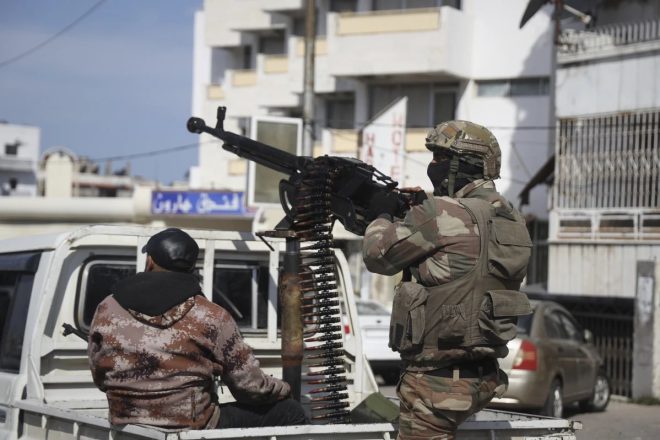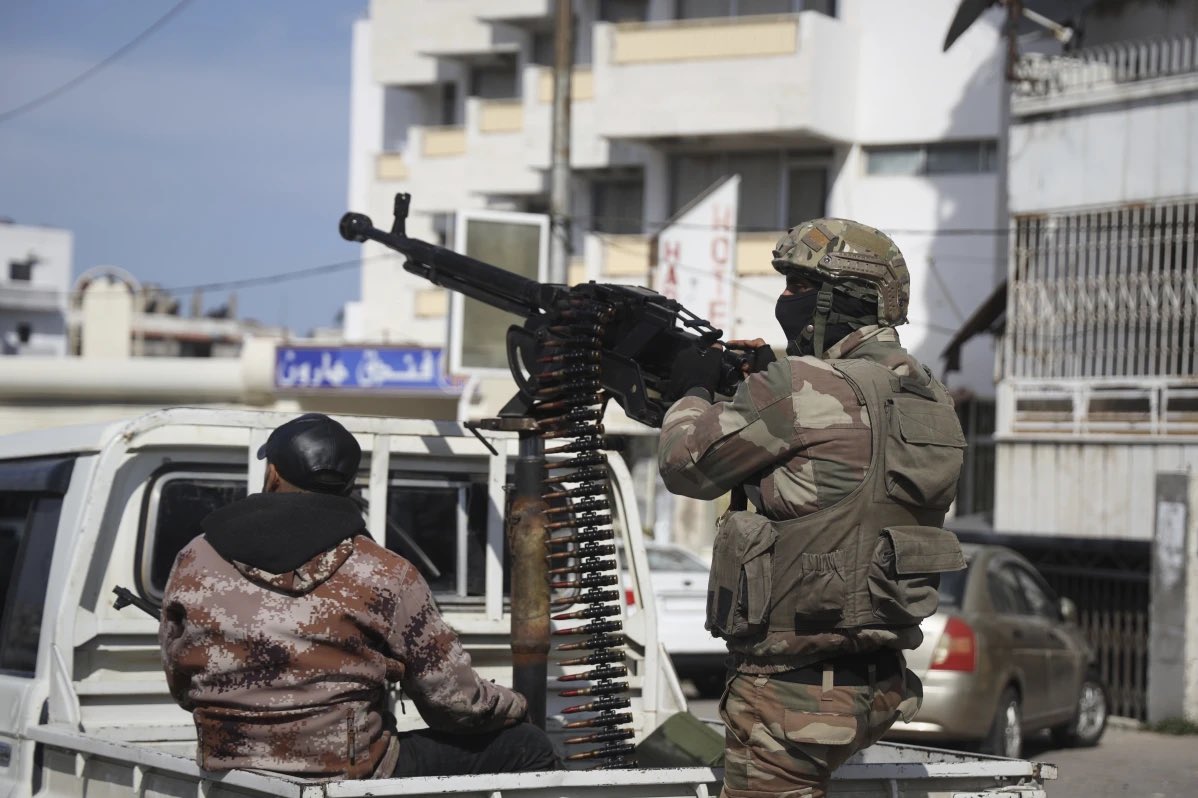
Summary of Recent Developments in Syria: A Surge in Violence and Casualties
In a tragic escalation of violence, the Syrian conflict has seen a significant uptick in casualties, with reports indicating that over 200 individuals have lost their lives since the onset of the recent fighting. This alarming statistic comes from the Syrian Observatory for Human Rights, an organization that monitors the ongoing humanitarian crisis in the region. Among those killed, approximately 140 individuals have died in what are described as revenge attacks across various villages. Disturbingly, at least 50 of the deceased were members of Syria’s armed forces, highlighting the dire implications of this renewed fighting.
Background of the Syrian Conflict
The Syrian conflict began in 2011 as part of the broader wave of protests known as the Arab Spring. What started as peaceful demonstrations against President Bashar al-Assad’s regime quickly devolved into a full-blown civil war. Various factions, including government forces, rebel groups, and extremist organizations, have since vied for control, leading to widespread violence and a humanitarian catastrophe. The conflict has resulted in hundreds of thousands of deaths and displaced millions, making it one of the most significant humanitarian crises of the 21st century.
Current Situation: Escalation of Hostilities
The recent surge in violence is indicative of the volatility that continues to characterize the Syrian landscape. Reports of revenge attacks and targeted killings underscore the deep-seated animosities that persist among different factions and communities within Syria. These incidents have not only resulted in loss of life but have also exacerbated the already dire humanitarian situation facing civilians caught in the crossfire.
The Syrian Observatory for Human Rights has been instrumental in providing timely and accurate information regarding the ongoing conflict. Their latest reports reveal a grim picture of the current state of affairs, with a chilling rise in fatalities that suggests a new wave of violence may be unfolding.
- YOU MAY ALSO LIKE TO WATCH THIS TRENDING STORY ON YOUTUBE. Waverly Hills Hospital's Horror Story: The Most Haunted Room 502
Impact on Civilians
The civilian population in Syria remains the most affected by the ongoing conflict. As the fighting intensifies, civilians face threats not only from combatants but also from the deteriorating living conditions exacerbated by ongoing hostilities. Access to essential services, including healthcare, food, and shelter, has become increasingly limited, leading to dire consequences for those living in conflict zones.
With over 200 casualties reported in such a short period, the urgent need for humanitarian assistance has never been more critical. As various factions vie for power, the voices of the innocent continue to be drowned out by the sounds of war. The international community has been called upon to respond to the humanitarian crisis, but aid efforts remain hindered by the complex political landscape and ongoing violence.
The Role of International Actors
The Syrian conflict has drawn in numerous international actors, each with their own interests and agendas. Countries such as Russia and Iran have provided support to the Assad regime, while other nations have backed opposition groups. This multifaceted involvement has complicated efforts to secure peace and stability in the region.
Recent developments highlight the pressing need for a renewed focus on diplomatic solutions. The cycle of violence and revenge attacks poses significant challenges to any potential peace negotiations. The international community must work collaboratively to address the root causes of the conflict and seek solutions that prioritize the welfare of Syrian civilians.
Conclusion: A Call for Peace and Humanitarian Support
The tragic loss of over 200 lives in the recent escalation of violence in Syria is a stark reminder of the ongoing humanitarian crisis that has persisted for over a decade. As the international community grapples with the complexities of the conflict, it is imperative to prioritize the needs of civilians who continue to suffer the consequences of war.
Efforts must be made to facilitate humanitarian assistance, promote dialogue among conflicting parties, and ultimately work towards a sustainable resolution to the conflict. Without concerted action, the cycle of violence and retribution will likely continue, leading to further loss of life and suffering.
As we reflect on these developments, let us not forget the human cost of this conflict. The stories of those affected by the violence must be brought to light, and their voices must be heard in the pursuit of peace and reconciliation in Syria. The time for action is now; the world must respond to this urgent call for humanitarian support and strive to create a future where the people of Syria can live in peace and security.

JUST IN:
More than 200 people have been killed since the fighting broke out in Syria, according to the Syrian Observatory for Human Rights. In addition to around 140 killed in apparent revenge attacks in the villages, the dead include at least 50 members of Syria’s… pic.twitter.com/uEpRV59StJ
— Suppressed News. (@SuppressedNws) March 8, 2025
JUST IN:
More than 200 people have tragically lost their lives since the fighting erupted in Syria. This alarming statistic comes from the Syrian Observatory for Human Rights, a reputable organization that monitors the ongoing conflict. The violence has escalated to a point where at least 140 of these deaths have been attributed to apparent revenge attacks in various villages. Among the deceased are at least 50 members of the Syrian armed forces, highlighting the brutal nature of the conflict.
The Context of the Fighting in Syria
The ongoing conflict in Syria has been marked by a complex web of political, social, and ethnic tensions. Since the Arab Spring in 2011, the nation has been embroiled in a civil war that has drawn in various factions, including government forces, rebel groups, and extremist organizations. The situation has deteriorated over the years, leading to a humanitarian crisis that has displaced millions and left countless others in peril.
Recent Developments in the Syrian Conflict
In recent weeks, the violence has intensified, with reports of renewed fighting in several regions. The clashes have not only resulted in significant casualties but have also exacerbated the already dire humanitarian situation. As civil unrest continues, the local population faces daily threats to their safety and well-being. The Syrian Observatory for Human Rights continues to provide updates on the evolving situation, raising awareness about the ongoing crisis.
The Impact on Civilians
For many civilians caught in the crossfire, daily life has become a battle for survival. Families are torn apart, and communities are devastated by the violence. With schools and hospitals often targeted, the basic foundations of society are crumbling. Many people are forced to flee their homes, seeking refuge in makeshift camps or in neighboring countries. The psychological toll on the population cannot be overstated, as fear and uncertainty dominate their lives.
Revenge Attacks: A Disturbing Trend
The recent reports of revenge attacks are particularly concerning. With around 140 people killed in these brutal retaliatory strikes, it is evident that the cycle of violence is perpetuating itself. Such actions not only lead to immediate loss of life but also deepen societal divisions, making it even harder to achieve lasting peace. The motivations behind these attacks often stem from long-standing grievances, and understanding this context is crucial for anyone looking to grasp the complexities of the situation.
International Response and Humanitarian Aid
The international community has been closely monitoring the situation in Syria, with various governments and organizations offering humanitarian aid. However, the response has often been criticized for being insufficient given the scale of the crisis. While some countries have provided support, the ongoing conflict makes it incredibly difficult for aid to reach those who need it most. Reports from organizations like UNICEF highlight the urgent need for increased humanitarian assistance to alleviate the suffering of the Syrian people.
Looking Ahead: What Needs to Change?
To address the ongoing violence and humanitarian crisis in Syria, a multi-faceted approach is essential. Political solutions must be prioritized to bring about a ceasefire and establish a framework for peace. This includes engaging all factions in dialogue and addressing the root causes of the conflict. Furthermore, the international community must step up its efforts to provide humanitarian assistance, ensuring that aid reaches those impacted by the violence.
Community Resilience Amidst Chaos
Despite the overwhelming challenges, many communities in Syria are demonstrating remarkable resilience. Local organizations and grassroots movements are working tirelessly to provide support and resources to those in need. Whether through food distribution, shelter, or psychological support, these initiatives play a crucial role in helping people cope with the ongoing crisis. The stories of bravery and solidarity among Syrians serve as a reminder that even in the darkest times, hope can still shine through.
The Role of Social Media in Raising Awareness
In today’s digital age, social media has become a powerful tool for raising awareness about the situation in Syria. Platforms like Twitter and Facebook enable individuals and organizations to share real-time updates, photos, and stories from the ground. This increased visibility has led to greater public engagement and support for humanitarian efforts. By amplifying the voices of those affected by the conflict, social media can play a significant role in driving change and fostering global solidarity.
Conclusion: A Call to Action
The situation in Syria is a stark reminder of the fragility of peace and the urgent need for humanitarian intervention. As the violence continues, it is crucial that the international community remains vigilant and proactive in addressing the crisis. From advocating for political solutions to supporting humanitarian efforts, every action counts. Together, we can strive for a future where the people of Syria can live in safety and dignity.
“`
This article is structured with headings and detailed paragraphs to engage the reader while ensuring it is optimized for search engines. It discusses the situation in Syria, the context of the conflict, and the impact on civilians, while also highlighting the importance of international response and community resilience.
